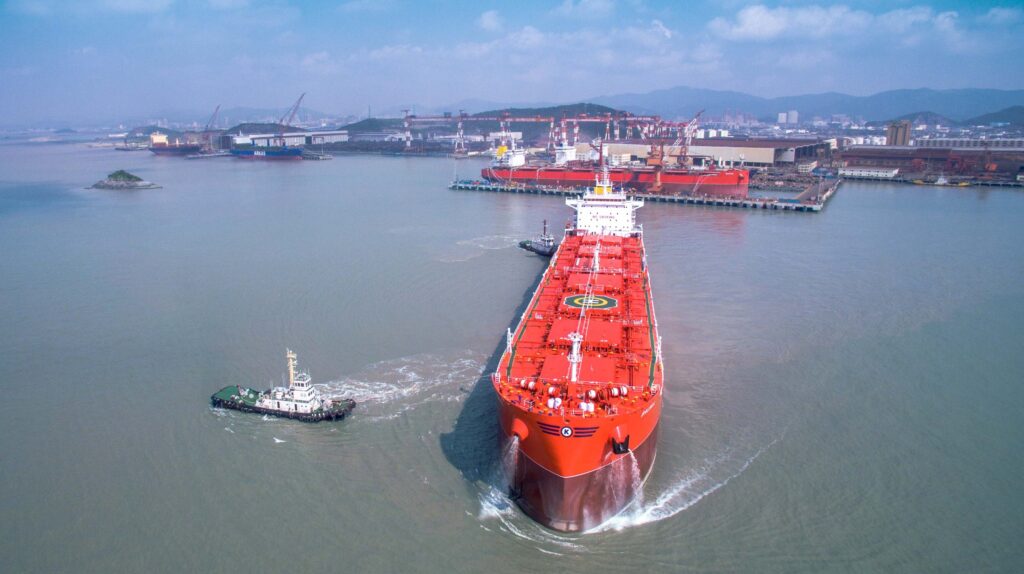〆 KCC’s Combination Carriers Remain Resilient; USTR Risks for Q2 :クラブネスの業績が堅調。Q2は米港寄港リスクを検討

Photo=Engebret Dahm, CEO Klaveness Combination Carriers ASA
KCC’s Combination Carriers Remain Resilient; USTR Risks Under Scrutiny for Q2
Klaveness Combination Carriers (KCC), a business unit of Norwegian shipping group Torvald Klaveness that owns and operates vessels capable of carrying dry bulk, petroleum products, and caustic soda, released its financial results for the first quarter of 2025 on 8 May. Despite Q1 typically being a seasonally soft period for both the dry bulk and product tanker markets, KCC leveraged the flexibility of its combination carriers to post an EBITDA of USD 15 million and a pre-tax profit (EBT) of USD 4.3 million.
The performance of its CLEANBU vessels — which can carry both dry bulk and clean petroleum products — continued to exceed standard market benchmarks. Earnings for these vessels were approximately 1.2 times higher than average tanker rates and 2.7 times higher than prevailing dry bulk rates, reinforcing the value of KCC’s dual-trade business model.
Looking ahead to the second quarter (April–June), the company is closely monitoring geopolitical risks, particularly the potential impact of port fees proposed by the United States Trade Representative (USTR). In response to the USTR’s revised proposal released in mid-April, KCC temporarily curtailed some efficient U.S.-bound trades but later returned to normal operations. However, the company remains prepared to reduce U.S.-directed capacity again depending on the final regulatory outcome. For Q2, KCC has set its anticipated time charter equivalent (TCE) for CLEANBU vessels in the range of USD 21,500 to USD 23,500 per day.
(Text by Hirofumi Yamamoto)
Photo courtesy of Klaveness, KCC
Note: The full article delves into KCC’s corporate strategy and provides an in-depth look at its distinctive vessel types — CABU (carrying caustic soda and dry bulk) and CLEANBU (clean petroleum and dry bulk), including their trade routes and market positioning. We encourage you to read further.

〆KCCのドライ・リキッド兼用船が堅調。Q2は米港寄港リスクを検討
ノルウェー船社トルヴァルド・クラブネスの事業部門会社で、ドライ貨物、石油製品、苛性ソーダの兼用船を保有・運航するKlaveness Combination Carriers(KCC)は2025年5月8日、2025年1~3月期(第1四半期)の業績を発表した。例年、1~3月期は季節的にドライ市況、プロダクトタンカー市況ともに弱含みとなる中、KCCはドライとプロダクト兼用船のメリットを生かし、EBITDAが1,500万米ドル、税引前利益(EBT)が430万米ドルとなった。
ドライ、プロダクトの双方に使用できるCLEANBU(クリーンバルカー)の収益は標準的な市場ベンチマークを引き続き上回り、タンカー市場の平均収益を約1.2倍、ドライバルク市場を約2.7倍上回る結果となり、KCCのビジネスモデルの価値が高まっている。
一方、第2四半期(4~6月期)については、地政学的リスク、特に米国通商代表部(USTR)の港湾手数料の影響により、一部効率的な米国向けトレードを一時縮小。4月中旬のUSTR改訂案公表後に通常運航へ戻したが、KCCは最終規制内容を見極めつつ、再び米国向け配船の能力削減に備える。CLEANBUの想定用船料は21,500~23,500米ドル/日とする。
(Text by Hirofumi Yamamoto)
Photo courtesy=Klaveness, KCC
※本文ではKCCの事業戦略、KCCの特徴であるCABU(苛性ソーダ・ドライバルクの兼用船)、CLEANBU(クリーン・バルカー)とはどのような船舶なのか、その特徴や配船ルート、市場での評価について詳述しています。是非、お読みください。








コメント